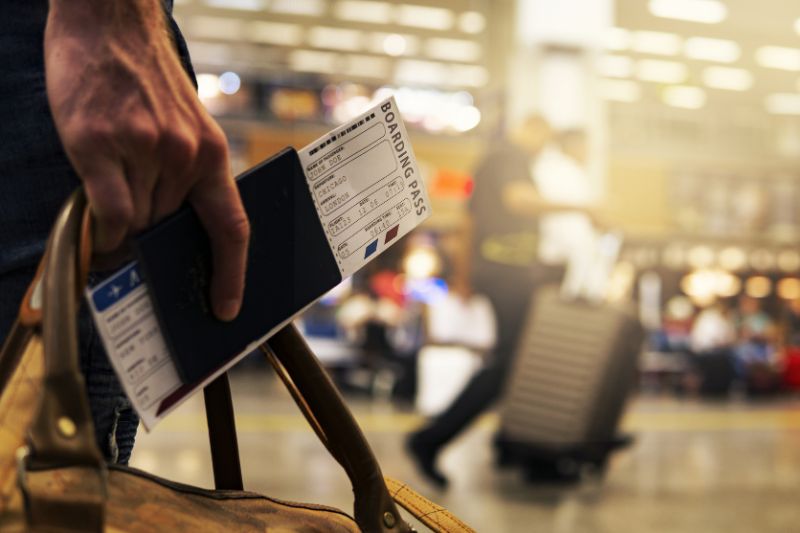There are 27 countries that form the Schengen Area, and admittance to any of these member states is closely monitored by the authorities. Although the countries that compose the European Union and Schengen Area are largely the same, there is a difference, and it is important to know before any European travel if the destination country is a member of the Schengen Area, the European Union or, quite possibly, both.
There is a considerable overlap between EU and Schengen member states, although the most significant differences are:
- Iceland, Norway, Liechtenstein and Switzerland are Schengen states but NOT in the EU.
- Croatia, Bulgaria, Cyprus, Romania and the Irish Republic are EU members but are not signed up to the Schengen Agreement.
Holders of passports issued in an EU or Schengen country do not require any additional documentation to enter and move around any European Union or Schengen Area member state apart from a valid passport.
This also applies to citizens of countries that have a reciprocal visa-exemption agreement with the European Union. This includes countries such as Australia, New Zealand, Canada and the United States. British citizens, despite Britain’s exit from the European Union, are also currently free to visit the European arena with just a valid passport. However, this situation may change in the near future as the Brexit deal on visa-free access to Europe runs out.
Uniform Schengen Visa
Visitors to the Schengen Area from countries not covered by a visa-exemption policy are termed “world travellers” and must possess a Schengen Visa before embarking on a trip to any of the member states. Schengen Visas are issued for a range of purposes and are usually valid for two years (although visas are also issued for periods of 2, 3, 4 and even five years). During their stay, a visa holder may spend a maximum of 90 days out of a block of 180 days in the Schengen zone.
This is called the 90/180 rule, and this type of visa is usually sufficient to cover short visits to a Schengen country. This could be for a vacation, visiting family or friends, on business, a short study course or even for medical reasons.
A Uniform Schengen Visa, or USV, is the most commonly issued type of visa and can be for a single entry into the Schengen zone, double entry or multiple entry, depending on the applicant’s requirements. Once a USV reaches its expiration date, the holder must leave the Schengen Area or risk financial penalties, deportation or even imprisonment. Any record of previous infractions on the terms of the visa will make it extremely difficult (if not virtually impossible) to be granted a Schengen Visa in the future.
While it is technically possible to extend a visa while within the Schengen Area, there must be very strong grounds for doing so. These include:
- Humanitarian reasons
- Personal reasons
- Force Majeure, such as natural disasters, the recent pandemic, etc.
Visa extensions are only granted in very rare cases or exceptional circumstances, and any world traveller wishing to spend an extended period in the Schengen Area will need something other than a Uniform Schengen Visa.
Extended Stay
The 5-year multiple-entry USV is the longest visa that can be applied for and may be suitable for some world travellers. The 90/180 day rule still applies, meaning the holder must leave the Schengen Area after spending ninety continuous days in the region.
A one-year visa is fine for world travellers who just wish to vacation in Europe or students wishing to attend one or more short courses but not for those who wish to spend many months or even years in a Schengen country. A standard visa also prohibits the holder from seeking any form of employment while in the Schengen Area.
Five Year Visa
The Five Year Multiple-entry Visa may seem like the perfect choice for those who wish to spend a considerable amount of time visiting a country or countries in the Schengen zone in the immediate future. However, it is not simply a matter of making the application and receiving automatic approval. There are a number of terms and conditions that must be met before an application for a five-year visa can even be considered.
According to the Schengen Visa Code, updated in 2020, to receive a five-year visa, an applicant must have held and legally used a two-year multiple-entry visa within the three years preceding the current application. This may sound simple, but in order to obtain a two-year multiple-entry visa, it is necessary to have held and used a one-year visa in the preceding two years.
In short, a world traveller cannot simply apply straight away for a five-year Schengen Visa. World travellers must first have held a one-year visa followed by a two-year visa before even considering making an application for the five-year version.
Multiple-entry Visa Application
Regardless of whether the application is for a one-, two- or five-year visa, the application process remains the same.
Along with possessing a valid biometric passport, an applicant must:
- Explain the reasons for the multiple entries into the Schengen Area
- Have a clean record of previous visa use (no overstaying, illegal working, deportation, etc.)
- Have no criminal record
- Demonstrate proof of adequate finances to cover expenses while in the Schengen Area.
All Schengen countries also require arriving world travellers to possess a certain level of travel insurance. The amount of coverage varies from country to country, and it is the duty of the applicant to ensure this matter is correctly addressed.
Once the application form has been fully completed (and checked) and all necessary supporting documentation collected, the next step in the process is to arrange a personal interview, which will usually take place at the embassy (or consulate) of the Schengen country in question.
In countries where no embassy or consulate exists, the interview will take place at a designated visa application centre. Arranging the interview is the responsibility of the applicant, not the embassy, and this should ideally take place at least two weeks before travel to allow for possible delays.
At the interview, the official in charge will check the application form and documentation for errors and omissions before approving or denying the visa. Once satisfied that all is in order, the applicant must make payment in full for the visa and will also likely be fingerprinted as part of the security protocol.
In the vast majority of cases, the visa should be granted within two to three days, but it is wise not to leave everything to the last minute in case some problem should arise. Although visa applications may be submitted up to six months before the day of travel to Europe, it is not a good idea to apply this far in advance. Schengen authorities recommend not applying any more than six weeks before the first planned day in the Schengen Area.
ETIAS is Not an Issue… Yet!
As world travellers intending to visit Europe in the near future may be aware, the European Union is currently introducing ETIAS, the European Travel Information and Authorisation System. This electronic visa is linked to a passport and performs the same basic function as a standard visa as it attempts to prevent unwanted and undesirable elements from entering Europe.
ETIAS is being introduced on a phased basis, and it is only citizens of some Middle Eastern countries that will require ETIAS approval before the end of 2023.
In 2024, however, the programme is set to be extended to the rest of the world and should be a mandatory requirement for all non-EU citizens by the end of the same year. At this point in time world travellers will need an ETIAS-approved passport to enter the European Union and a Schengen Visa for those countries that are members of the Schengen Area but not of the European Union.




